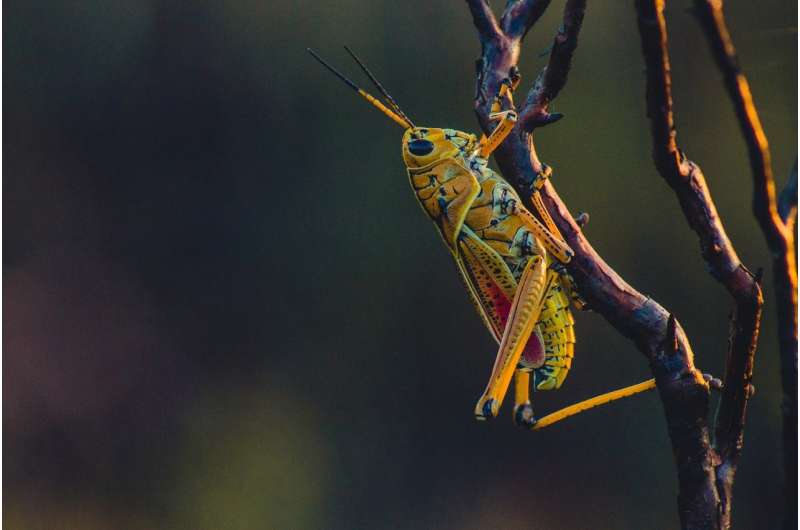December 16, 2020 report
Smaller-than-average male tree crickets found to boost the sound level of their chirps using baffles

A trio of researchers at the Indian Institute of Science has found that undersized tree crickets make up for their inability to produce loud chirps by creating baffles to increase their volume. In their paper, published in Proceedings of the Royal Society B, Rittik Deb, Sambita Modak, and Rohini Balakrishnan describe their study of tree crickets both in the wild and in their lab.
Prior research has shown that female tree crickets prefer large male partners, due in large part to their ability to produce very loud chirps. In addition to pursuing the louder chirp makers, females have been found to mate longer with them—making the chances of the mating more likely to result in producing offspring. Mating with large males was typically on the order of 45 minutes, whereas mating with the rare small male would generally only last a few minutes.
In this new effort, the researchers have found that many smaller tree crickets have developed a way to overcome their size and chirp-making abilities—by making and using baffles.
The baffles made by the crickets were in practice nothing more than leaves. To increase his volume, a male would chew a hole through a leaf, then push his head and part of his body through the hole and then begin chirping. The leaf worked like a megaphone, concentrating and amplifying the volume of his chirps. In their lab, the researchers found that the ruse continued after the chirping had attracted a female—dazzled by the loud chirping, she would mate with the male for a much longer period of time than she otherwise would have—in some instances, for over an hour—longer than she would have mated with a large male.
In their lab, the researchers also tested the effectiveness of the baffles. They found that the leaf trick more than doubled the volume of the chirp, and in some cases, it was tripled—growing from an average of 60 decibels to 70 decibels. That would be equivalent to moving from a noisy restaurant into a room with a running vacuum cleaner, they note.
More information: Rittik Deb et al. Baffling: a condition-dependent alternative mate attraction strategy using self-made tools in tree crickets, Proceedings of the Royal Society B: Biological Sciences (2020). DOI: 10.1098/rspb.2020.2229
Journal information: Proceedings of the Royal Society B
© 2020 Science X Network



















